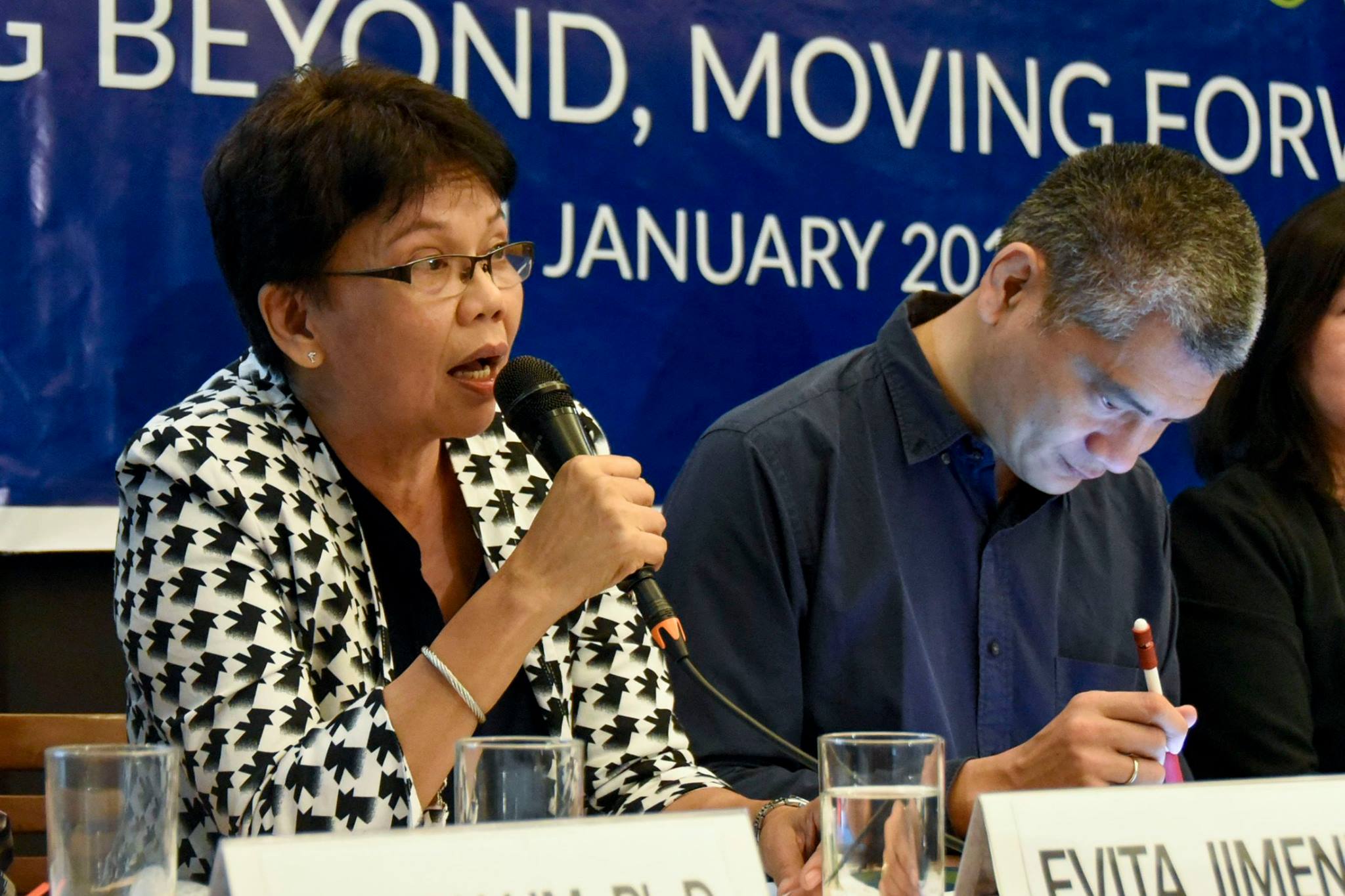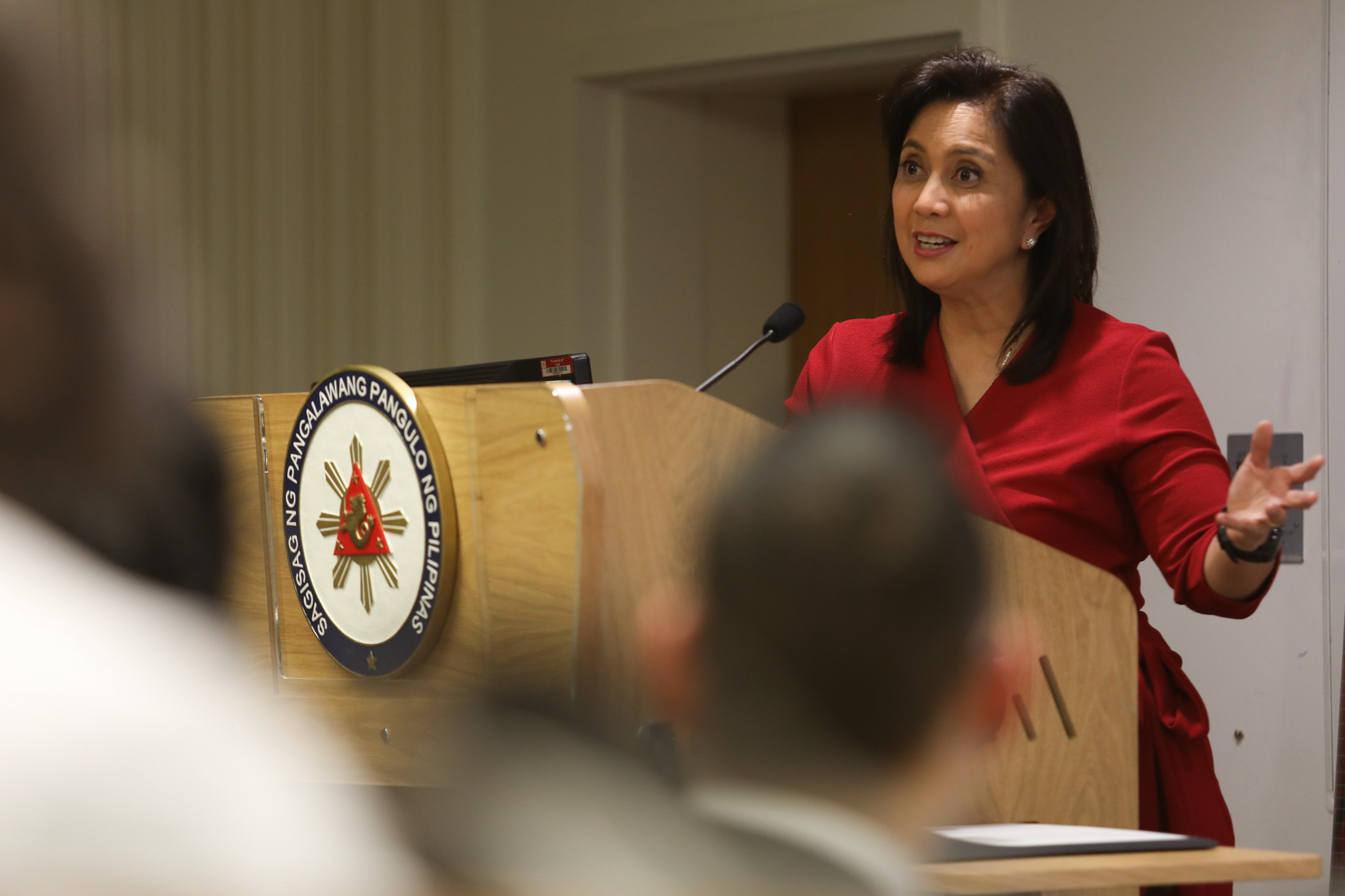The series of strong earthquakes that caused massive structural damages in Mindanao in October has prompted the government to order the strict enforcement of the National Building Code (NBC).
The quakes, with one as strong as magnitude 6.6, shook and damaged 40,632 infrastructures, including schools, hospitals, and houses, according to the Nov. 15 situational report of the National Disaster Risk Reduction and Management Council. President Rodrigo Duterte’s house in Davao City also suffered cracks.
Duterte ordered all local government units and contractors to ensure that all construction materials are compliant with quality standards. He also ordered the inclusion of hollow blocks in the list of products that require mandatory certification, noting the possible non-compliance of small hollow-block makers to set standards.
The extent of the damage also renewed calls in both houses of Congress to revise the policy.
But what does the NBC currently say about earthquake-resilient infrastructure? Here are five things you need to know.
What standard is used to construct earthquake-resilient infrastructure?
Builders refer to the National Structural Code of the Philippines (NSCP) to ensure that buildings, such as high-rise condominiums, can withstand tremors as high as magnitude 8.
Developed by the Association of Structural Engineers of the Philippines (ASEP), the NSCP is cited as a “referral code” of the NBC — the primary basis for the construction, design, use, and maintenance of all buildings in the country — since the latter does not specify standards for earthquake-resilient structures.
The NSCP covers only buildings, towers, and other vertical structures, such as poles and billboards. Other “special structures,” including “single family dwellings,” are also required to comply with the code “as a minimum whenever applicable.”
Traditional indigenous family dwellings and economic and socialized housing projects, on the other hand, are exempt from compliance, as stated in the NBC’s implementing rules and regulations (IRR).
In an interview on Nov. 11, ASEP Vice President Ariel Santos said the association is now working to “develop” a separate code for housing that would include templates for low-cost but earthquake-resilient houses.
The Philippine Institute of Volcanology and Seismology, or Phivolcs, issued in 2014 a 12-point checklist for concrete hollow block houses in the country, which can be used to evaluate their vulnerability to strong quakes.
What is considered earthquake-resilient?
Buildings in the country that were designed based on the NSCP must be able to withstand strong quakes ranging from magnitude 7 to 8.4, said Santos. They must be “properly designed,” made of “good quality materials,” and “good” in construction to be considered sturdy, he added.
The NSCP lays out factors to serve as bases in designing earthquake-resilient structure: seismic zoning, site characteristics, occupancy, configuration, structural system, and height.
In a Nov. 7 interview, engineer Katherine Anne Macoy, chief of the Department of Public Works and Highways (DPWH) Bureau of Design structural section, said structural engineers must also consider:
- distance to a fault line and the force it may generate; and
- earthquake loads, or the “assumption” of the required load needed by the structure to withstand an earthquake.
A structure is “assumed” to be NSCP-compliant once it is issued a building permit, according to architect Mariano del Castillo, a staff member of the NBC development office in the DPWH.
But even with these safety considerations, Macoy said the NSCP assures neither “zero-damage” nor functionality of structures following a “severe” earthquake:
“Ang code kasi natin…naga-allow siya ng damages. Hindi ibig sabihin na dinesign mo siya according sa code, walang damage ang building ‘pag malakas ang earthquake…Ang importante hindi mag-collapse ‘pag masyadong, iyong malakas na earthquake
(Our code allows damages. It does not mean that a building you designed based on the code will not obtain damages from a strong earthquake…The important thing is that it will not collapse in a strong earthquake).”
Source: Interview with Katherine Anne Macoy, Nov. 7, 2019
Macoy added that structural design is done “based on assumptions” since “no one really knows how an earthquake moves.”
Of the more than 40,600 infrastructures totally or partially damaged by the magnitude 6.6 and 6.5 earthquakes that hit Mindanao on Oct. 29 and Oct. 31, Del Castillo said:
“Hindi talaga nasunod iyong NSCP kaya ganoon or kung minsan kasi mayroon ding…kasalanan…iyong building owner. Tinitipid niya (The NSCP was not really followed or sometimes the building owner may be at fault for not spending enough),” said Del Castillo.
Source: Interview with Mariano del Castillo, Nov. 7, 2019
Who enforces the building code?
The Public Works and Highways secretary oversees the administration and enforcement of the NBC, as well as the imposition of penalties for administrative violations.
The enforcement of the code “in the field” is entrusted to building officials, or experienced and licensed civil engineers or architects “separate and distinct” from municipal or city engineers, assigned by the secretary to each city and municipality. They are tasked to process and grant building permits, issue penalties for erring builders, and conduct annual inspections on “all buildings” within their jurisdiction.
However, inspection is currently being done “more on” commercial establishments since it is a requirement for the renewal of business permits, Del Castillo told VERA Files in a Nov. 7 interview.
Architect Edison Padilla, building official of the Valenzuela City government and executive vice president of the Philippine Association of Building Officials, said in a 2018 radio interview that building officials have “no mandate” to inspect residential buildings annually. Thus, such structures are inspected only “per request of the owner,” said Del Castillo.
What are the penalties for non-compliance to the building code?
Any “person, firm, or corporation” that violates “any provision” of the NBC may be fined not more than P20,000 or imprisoned for not more than two years, or both, as stated in section 213 of the NBC IRR.
Owners who violate the building code will be penalized and may not be issued a building permit, Del Castillo said.
Buildings are expected to last from 30 to 50 years, according to Padilla. Article 1723 of the Civil Code of the Philippines states that any building collapsing within 15 years from its completion due to a “defect” in the plans and specifications or in the ground itself is the liability of the engineer or architect. The contractor is also liable if the collapse happened due to defects in the construction or the use of substandard materials.
When was the NBC last updated?
The code’s IRR was last revised more than 10 years ago in 2005, but the NBC itself has not been amended since it was decreed by late dictator Ferdinand Marcos Sr. in 1977.
Del Castillo said the DPWH pushed for the passage of the Philippine Building Act (PBA), a draft amending the NBC created by the University of the Philippines National Engineering Center, in the previous Congress. It was “adopted” by a few representatives in the House but was not approved since it had no counterpart in the Senate, he added.
1-Pacman representatives Michael Romero and Enrico Pineda have filed in the 18th Congress House Bill 4008, or the PBA of 2019, which seeks to repeal the NBC. At least three other House bills are seeking to amend certain provisions of the code.
Sources
Department of Trade and Industry, PRRD ORDERS INCLUSION OF HOLLOW BLOCKS IN THE LIST OF PRODUCTS WITH MANDATORY CERTIFICATION – DTI CHIEF, Nov. 7, 2019
National Disaster Risk Reduction and Management Council, Situational Report No. 23 regarding Magnitude 6.6 and 6.5 Earthquakes in Tulunan North Cotabato, Nov. 15, 2019
Official Gazette, PRESIDENTIAL DECREE (P.D.) NO. 1096
Department of Public Works and Highways, Implementing Rules and Regulations of the National Building Code of the Philippines (PD1096)
National Structural Code of the Philippines 2015
Philstar.com, Duterte safe in Davao, but house suffers cracks, Nov. 1, 2019
Rappler.com, After 3 Mindanao earthquakes, Duterte not visiting affected areas, Oct. 31, 2019
ABS-CBN News, Duterte safe in Davao City, house sustained cracks after Mindanao quake, Oct. 31, 2019
CNN Philippines, Structural engineer Ronaldo Ison: Properly designed building should not collapse amid magnitude 7.8 quake…, April 24, 2019
Personal interview with Department of Public Works and Highways’ Bureau of Design Engineer IV and section chief Katherine Anne Macoy, Nov. 7, 2019
Personal interview with Project Manager 1 Mariano Del Castillo of Department of Public Works and Highways’ Buildings and Special Projects Management Cluster-Unified Project Management Offices, Nov. 7, 2019
Personal interview with Association of Structural Engineers of the Philippines Vice President Ariel Santos, Nov. 11, 2019
Official Gazette, Republic Act No. 386, June 18, 1949
Radyo Veritas official Facebook page, Untitled, Aug. 25, 2018
Philippine Institute of Volcanology and Seismology, How Safe is my house?, February 2014
Filed bills amending the NBC
- Congress.gov.ph, House Bill 4008
- Inquirer.net, Revamp of building code, Dep’t of Disaster Resilience pushed anew after Mindanao quakes, Oct. 29, 2019
- Philstar.com, House eyes review, update of building code, Oct. 31, 2019
- UNTV, Cayetano seeks review of National Building Code Oct. 31, 2019
- Congress.gov.ph, House Bill 364
- Congress.gov.ph, House Bill 1650
- Congress.gov.ph, House Bill 1891
(Guided by the code of principles of the International
Fact-Checking Network at Poynter, VERA Files tracks the false claims,
flip-flops, misleading statements of public officials and figures, and
debunks them with factual evidence.
Find out more about this initiative and our methodology.)



